ANATOMY OF A LAMP
When choosing a lighting plan, it is important to understand that there are many elements to consider. Following are a few illustrations to help identify the basic anatomy of a standard table lamp shade and base.
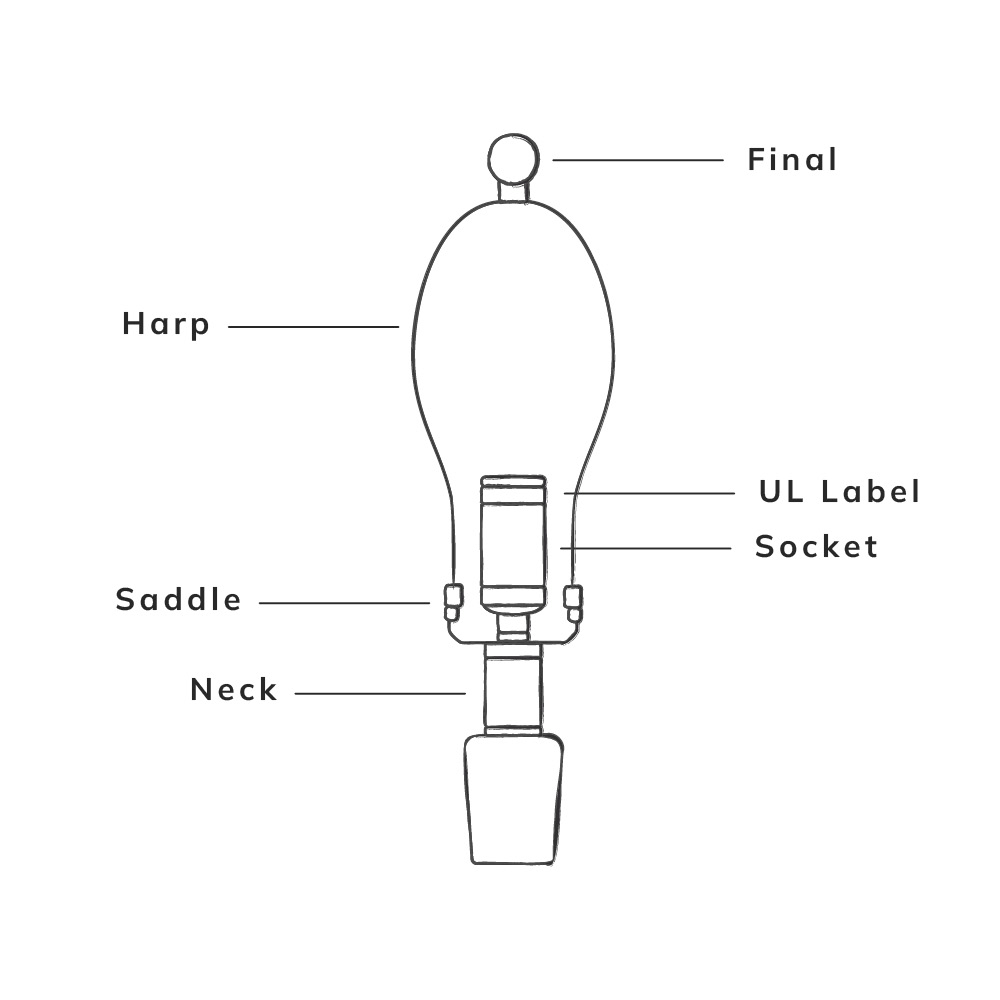
Socket: A threaded screw base used to hold and connect a light bulb to a power source.
Harp: The wire support that attaches at the socket and supports the shade at the top of the lamp.
Saddle: A metal base to which the harp attaches.
Finial: A small finishing ornament that is attached to the top of the harp. This may be simple or ornate.
Neck: The portion of the lamp that connects the harp, saddle and socket to the base of the lamp. The color of the neck should always match the color of the harp.
UL Label: Certifies that an electrical product has been tested and complies with UL standards.
HOW TO MEASURE A LAMP
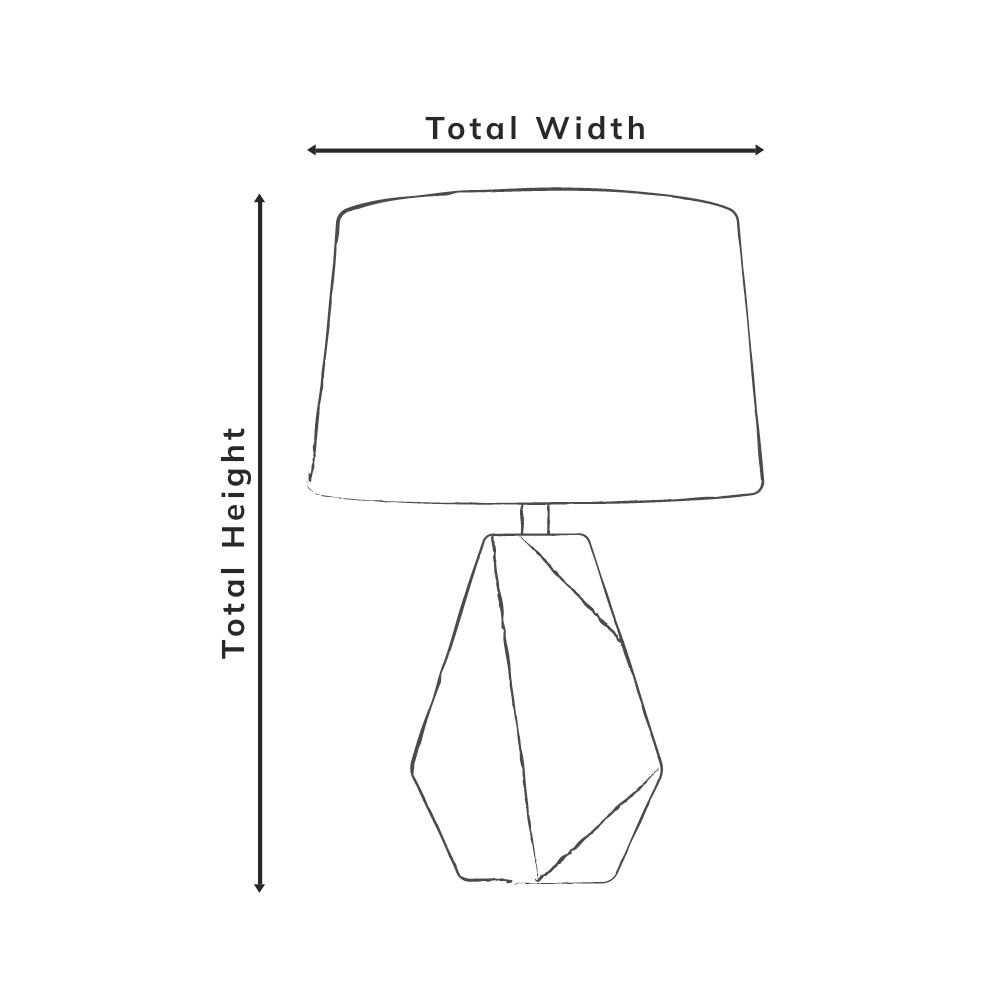
Measuring Total Height
Place the end of the measuring tape at the top edge of the shade, and pull down to the bottom or base of the lamp.
Measuring Total Width
Place the end of the measuring tape at the centermost or widest portion of the shade and pull across the shade of the lamp to the corresponding opposite edge. This will give you the measurement of the total width of the lamp with shade affixed.
SHADE CONSTRUCTIONS
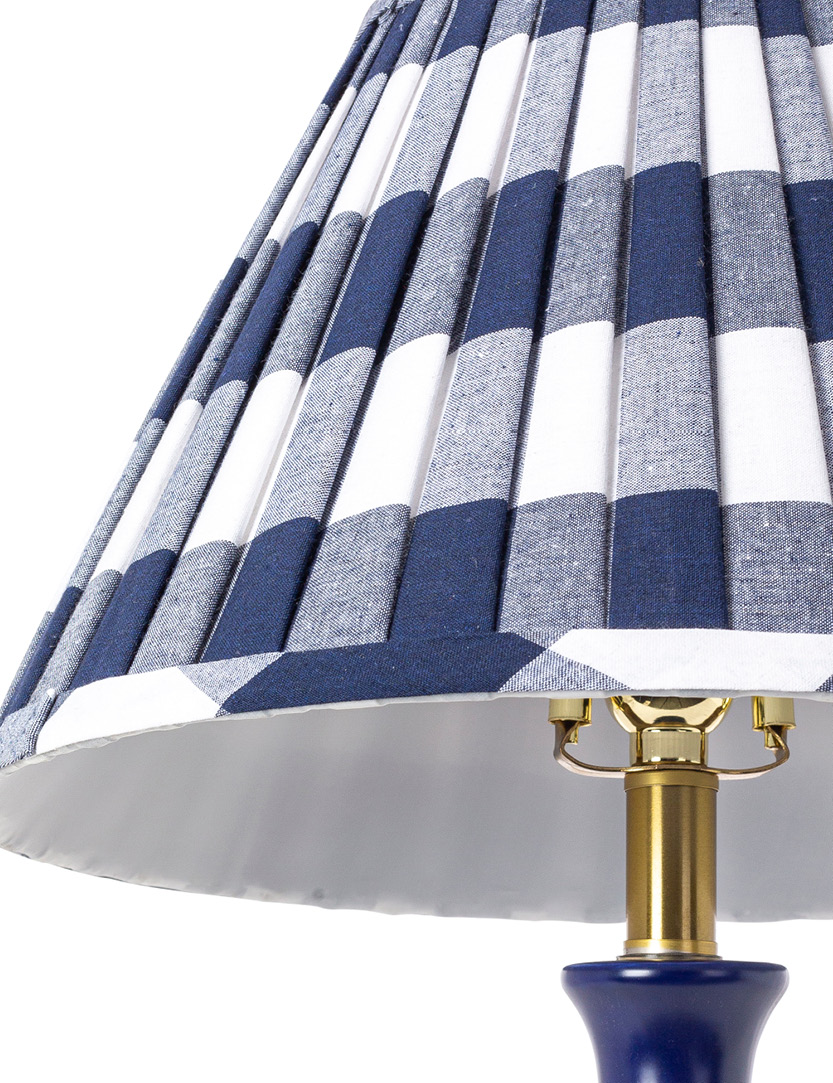

OUTER STRUCTURE
A hardback lampshade is typically lined with plastic or another material designed to prevent light from passing through the side of the shade. The hard lining allows the shape of the shade to be quite firm and less likely to change over time. The firm backing is glued into place behind a more attractive outer material.
A softback lampshade (stretched) does not have a firm lining although it may still potentially be lined. The lining, however, is flexible, such as linen or paper, and so does not provide support for maintaining the shape of the shade. As a result, the softback or stretched shade requires additional vertical supports between the bottom and the top of the shade to maintain shape.
INNER STRUCTURE
The inner structure of the shade is as important as the outside construction. The standard constructs of a lampshade include standard framework, full framework and fitter.
Standard framework consists of a top and bottom ring. The top ring is often referred to as the spider and establishes the top diameter and the drop of the shade, while the bottom ring establishes the bottom diameter of the shade.
Full framework contains top and bottom rings that are welded together by ribs. Fabric is usually sewn and stretched over the framework.
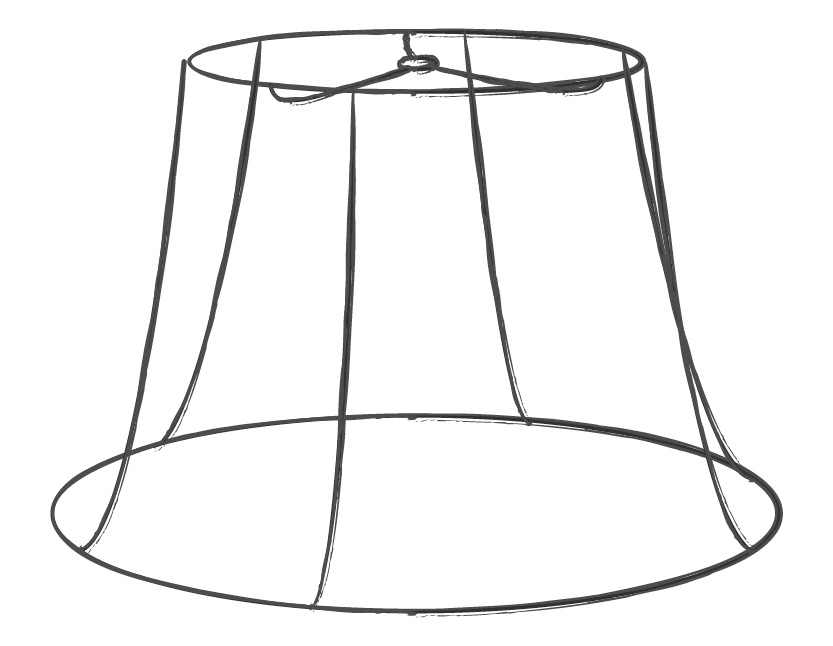
A fitter is a way the shade connects to the lamp. All fitters are integrated into the lampshade. Most lamps have a spider fitter but are made using the uno or clip-on fitters.
Spider Fitters: If the lamp has a harp, it will have a shade with a spider fitter. The spider fitter sits on top of the harp, is secured by the finial and is integrated in the lampshade.
Slip Uno Fitters: The Uno fitter is built into the lampshade. The slip type sits on the socket and is held in place by the bulb.
Threaded Uno Fitters: The Uno fitter is built into the lampshade. The threaded type is typically for down-bridge lamps and features a screw thread for installation above the downward-facing bulb.
SHADE SHAPES
Different types of lamp shades correlate to different functions for practical purposes; be it sitting nearby, at a distance, or as an ambient light source. Some lampshades may contain diffusers which are used to obscure the light bulb and diffuse light from the bulb. Diffusers are positioned on the top, bottom or both areas of a shade to guard against debris and dust. They come in acrylic, plastic, metal and glass. Following are some examples of shade types offered by Surya:
BASE CONSTRUCTIONS
The base of a lamp is the part that connects to the lamp holder and provides electrical contacts. The rod of the lamp is the portion of the lamp that houses the electrical cords inside the base. Base weights are often included in the structure of the lamp in order to provide stability. UL regulations require that floor and table lamps are stable enough to be placed on an eight-degree incline without tipping over. A table lamp's base weight requirement is dependent upon the design of the lamp. Base weights can typically range from 1 to 5lbs. Most frequently, a two-pound weight will be sufficient to comply with the UL standard.
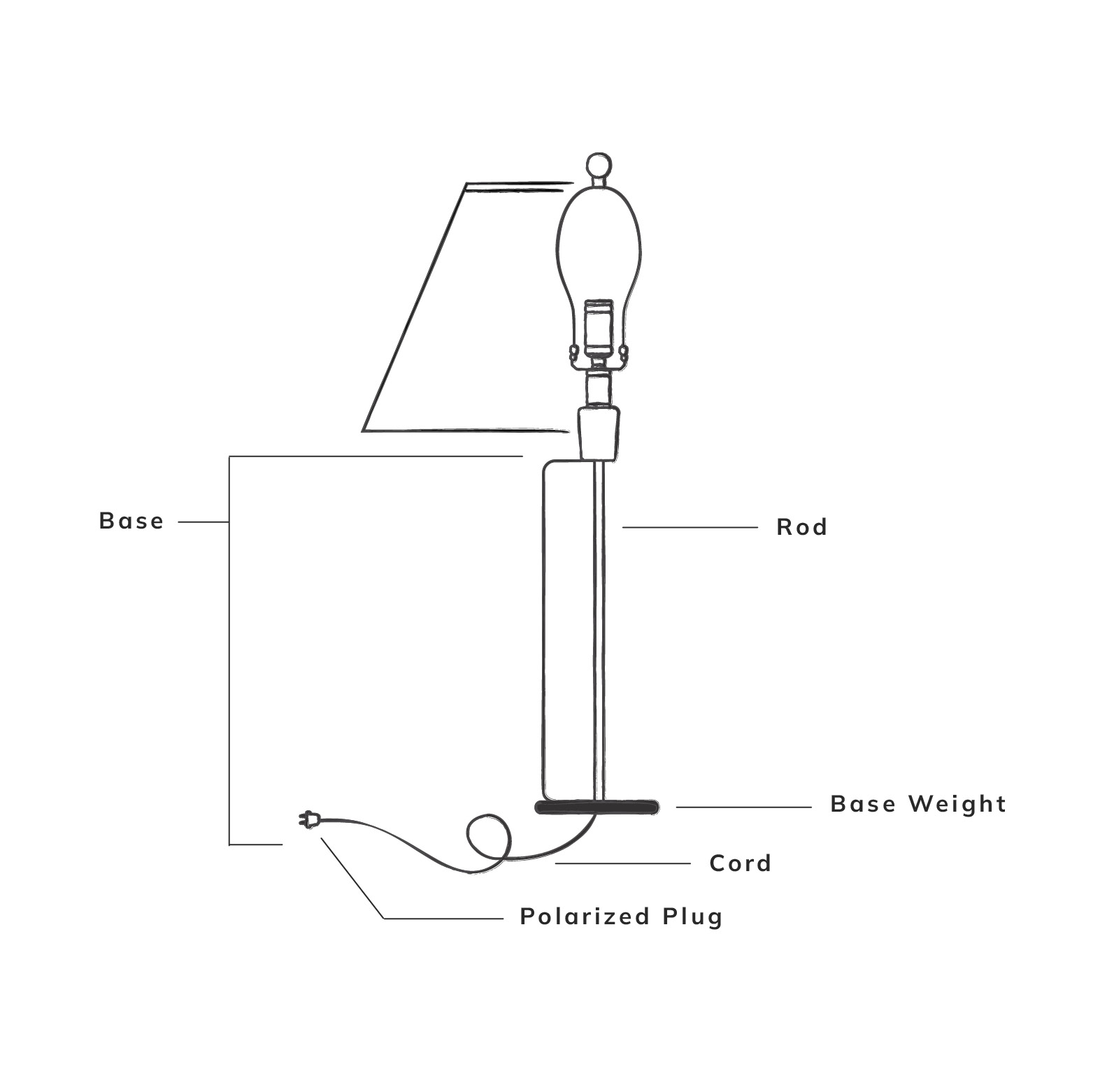
A cord of standard length is attached to the polarized plug. Surya lamp cord length is measured from where the cord exits the lamp to the end of the cord and typically ranges from 8 to 12 feet.
The plug has a small blade for the hot wire and a large blade for the neutral wire to prevent shock from the metal parts of the light.
SWITCH TYPES
|
|
3-Way Turn Knob Switch
The 3-way turn knob socket allows a bulb to burn in three positions: Hi, Lo and Off. |
|
|
On/Off Line Switch
The on/off line switch is a simple on/off rocker switch. |
|
|
On/Off Line On a Cord Switch
The on/off line on a cord is a convenient way to turn the lamp on and off since the on/off switch is located on the cord line for easy access. |
|
|
Floor Tap or Foot Step Switch
The on/off switch is maintained on the floor and operated by foot. This is common for floor lamps. |
|
|
Twin Pull On/Off Chain Switch
The socket switch is operated by pulling on the connected chain. |